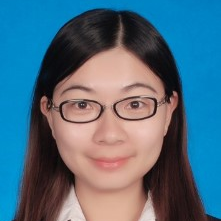Lanthanide-Doped Luminescent Nanomaterials: Design, Synthesis, Optical Properties and Applications
A special issue of Nanomaterials (ISSN 2079-4991). This special issue belongs to the section "Synthesis, Interfaces and Nanostructures".
Deadline for manuscript submissions: 25 July 2024 | Viewed by 5111
Special Issue Editor
Special Issue Information
Dear Colleagues,
Impurity doping is a promising method to modify material properties. Lanthanide ions have been extensively explored as active dopants in nanomaterials to modulate their morphologies, sizes and electronic configurations. Moreover, doping with lanthanide ions can impart rich optical properties, making doped nanomaterials attractive for many applications. Owing to their unique properties, lanthanide-doped luminescent nanoparticles have found applications in bioimaging, sensing, photothermal therapy, photodetector, solid-state lighting and anti-counterfeiting.
This Special Issue aims to provide an overview of the recent developments in lanthanide-doped luminescent nanomaterials, including, but not limited to, the following:
- Synthesis and morphology control of lanthanide-doped nanomaterials;
- Optical properties of lanthanide-doped nanomaterials;
- Application of lanthanide-doped nanomaterials.
Dr. Sai Xu
Guest Editor
Manuscript Submission Information
Manuscripts should be submitted online at www.mdpi.com by registering and logging in to this website. Once you are registered, click here to go to the submission form. Manuscripts can be submitted until the deadline. All submissions that pass pre-check are peer-reviewed. Accepted papers will be published continuously in the journal (as soon as accepted) and will be listed together on the special issue website. Research articles, review articles as well as short communications are invited. For planned papers, a title and short abstract (about 100 words) can be sent to the Editorial Office for announcement on this website.
Submitted manuscripts should not have been published previously, nor be under consideration for publication elsewhere (except conference proceedings papers). All manuscripts are thoroughly refereed through a single-blind peer-review process. A guide for authors and other relevant information for submission of manuscripts is available on the Instructions for Authors page. Nanomaterials is an international peer-reviewed open access semimonthly journal published by MDPI.
Please visit the Instructions for Authors page before submitting a manuscript. The Article Processing Charge (APC) for publication in this open access journal is 2900 CHF (Swiss Francs). Submitted papers should be well formatted and use good English. Authors may use MDPI's English editing service prior to publication or during author revisions.
Keywords
- lanthanide-doped luminescent nanomaterials
- upconversion
- perovskites
- energy transfer
- sensing
- solid-state lighting
- photodetector
- anti-counterfeiting






